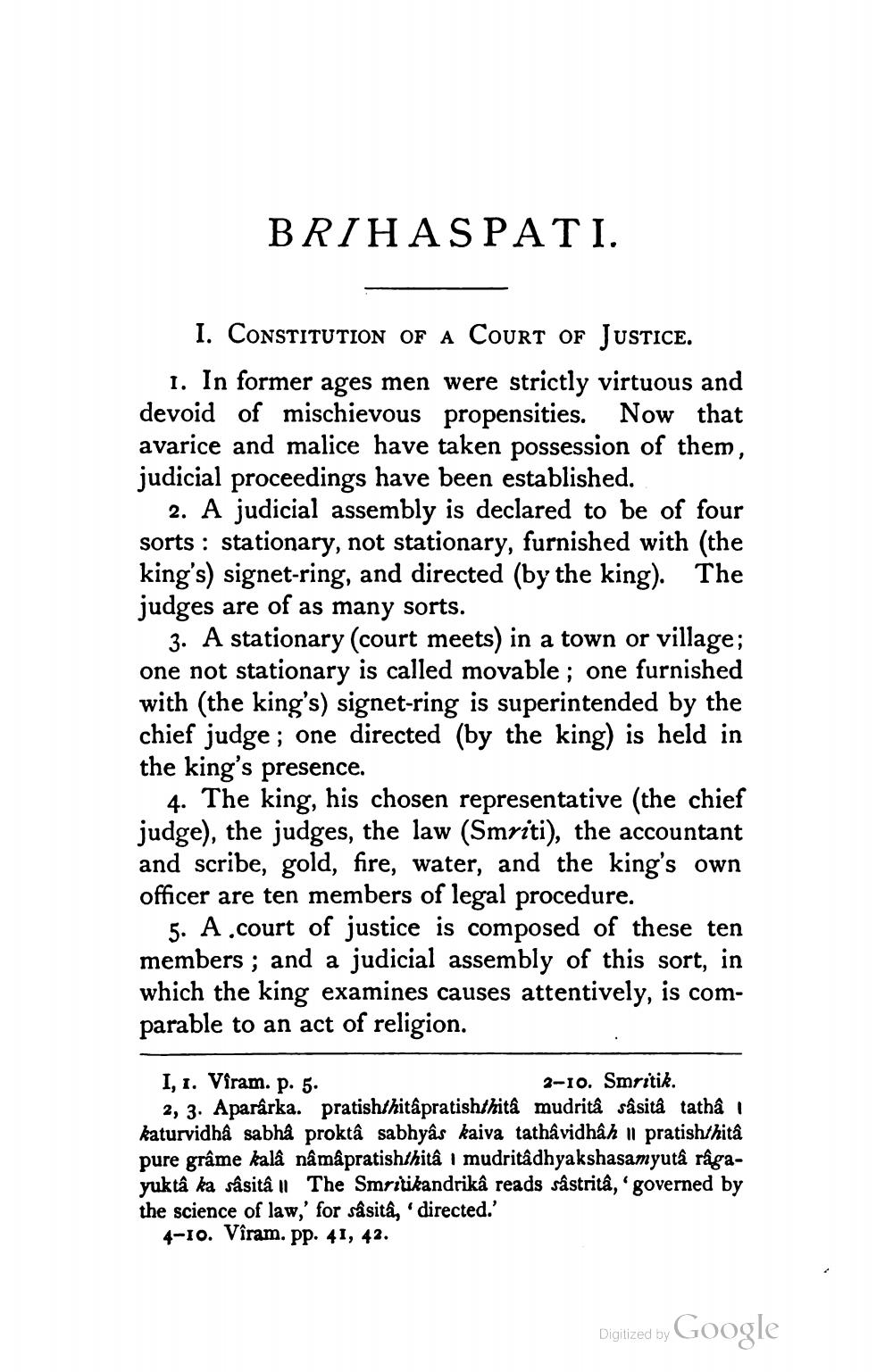________________
BRIHASPATI.
I. CONSTITUTION OF A Court of Justice. 1. In former ages men were strictly virtuous and devoid of mischievous propensities. Now that avarice and malice have taken possession of them, judicial proceedings have been established.
2. A judicial assembly is declared to be of four sorts : stationary, not stationary, furnished with (the king's) signet-ring, and directed (by the king). The judges are of as many sorts.
3. A stationary (court meets) in a town or village; one not stationary is called movable ; one furnished with (the king's) signet-ring is superintended by the chief judge; one directed (by the king) is held in the king's presence.
4. The king, his chosen representative (the chief judge), the judges, the law (Smriti), the accountant and scribe, gold, fire, water, and the king's own officer are ten members of legal procedure.
5. A .court of justice is composed of these ten members; and a judicial assembly of this sort, in which the king examines causes attentively, is comparable to an act of religion.
1, 1. Vîram. p. 5.
2-10. Smritik. 2, 3. Apararka. pratishthitâpratishthita mudrità sâsità tathai katurvidhå sabhå proktâ sabhyâs kaiva tathâvidhâh II pratishthitâ pure grâme kalå nâmåpratishthitâ i mudritâdhyakshasamyutâ râgayukta ka sâsità Il The Smritikandrika reads sastrita, governed by the science of law, for såsita, directed.'
4-10. Vîram. pp. 41, 43.
Digitized by Google




